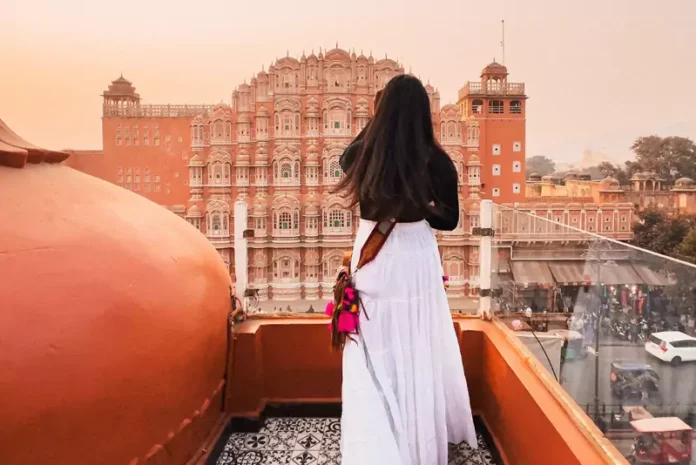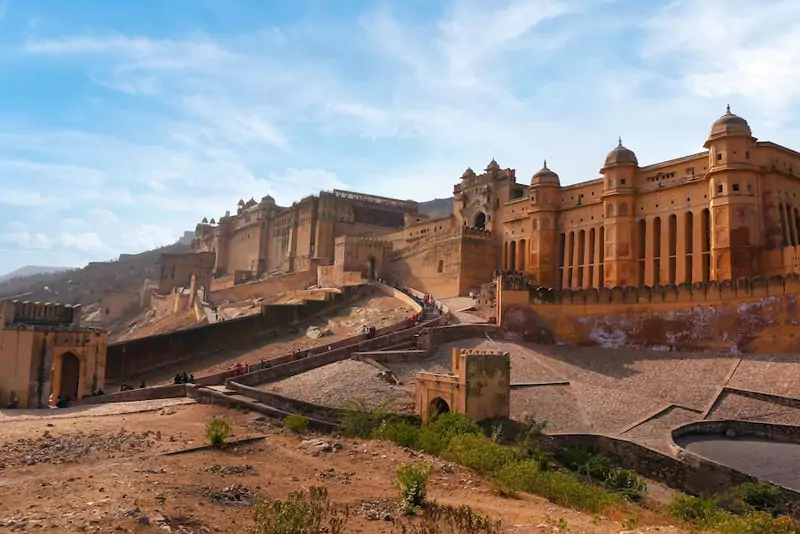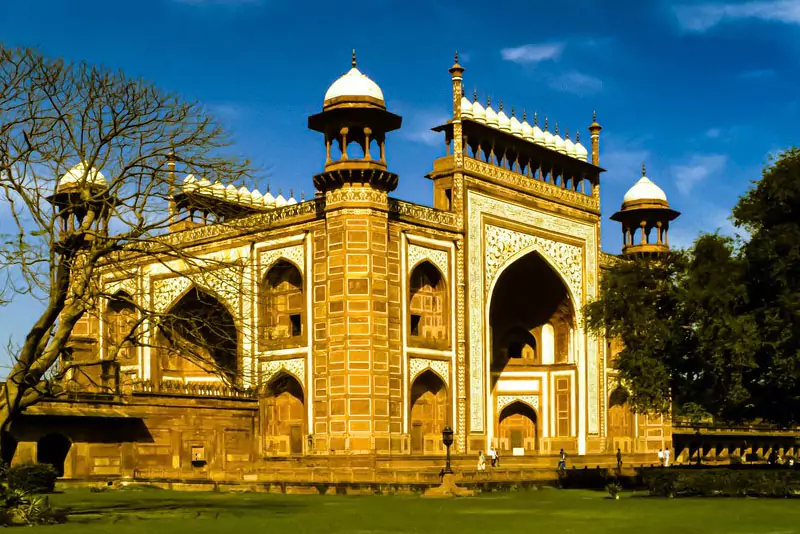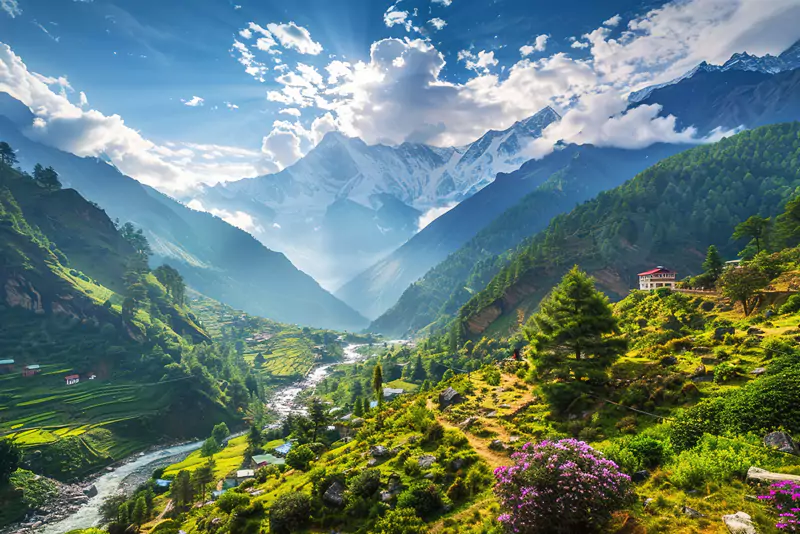Discover the colorful streets and rich heritage of Jaipur through your camera lens. Here are 10 must-visit photography spots in the Pink City, where each shot captures a unique story.
1. Patrika Gate – A Colorful Chronicle of Rajasthan’s Cultural Heritage
Located in Jaipur, Patrika Gate is a vibrant symbol of Rajasthan’s rich cultural heritage and artistic brilliance. With its colorful and intricately designed architecture, this stunning gateway is a dream destination for photographers, renowned for its unique structure and detailed artwork.

Every pillar and wall of Patrika Gate is adorned with depictions of Rajasthan’s diverse cultural stories and glimpses of local life. The vibrant sculptures, characters in traditional attire, and regional art styles make it a perfect subject for photography. These vivid colors and intricate artworks infuse every frame with a distinct sense of life and energy.
In daylight, the bold and bright hues of the gate shine beautifully under natural sunlight, adding a striking glow and vibrancy to your photos. As evening falls and the gate is illuminated with stunning lights, it transforms into a magical, dreamlike setting—an ideal spot for night photography. With a tripod and long exposure, you can capture breathtaking shots that reflect the gate’s enchanting ambiance.
Patrika Gate is not only a favorite location for photographers in Jaipur but also a living canvas that narrates Rajasthan’s cultural legacy. If you’re looking to weave art, color, and history into your photographs, this place is a must-visit on your travel list.
2. Albert Hall Museum – Jaipur’s Photogenic Gem
Located in the heart of Jaipur, the Albert Hall Museum is a magnificent spot for photography enthusiasts. Built in the Indo-Saracenic architectural style, this historic building is renowned for its grand domes, elegant arches, and intricate carvings.
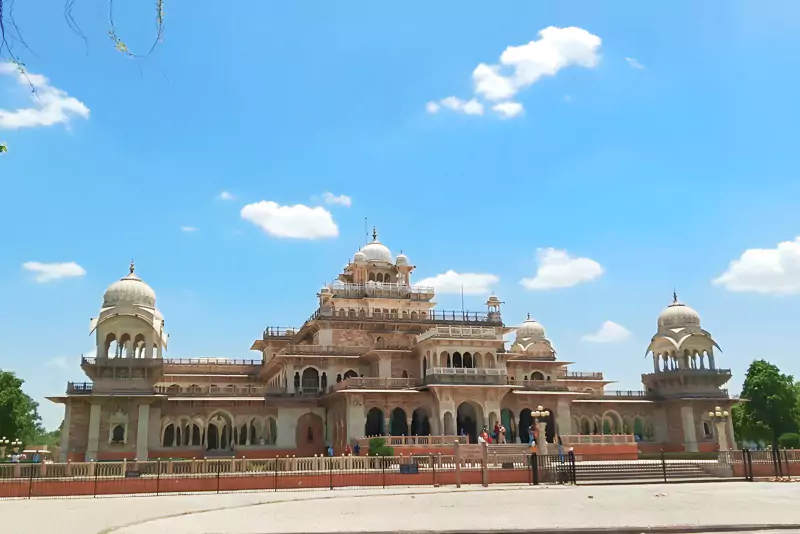
In the soft morning sunlight, the architecture of the museum appears especially captivating, while at night, its colorful lighting gives it a magical aura—creating the perfect backdrop for night photography. The open lawns in front of the museum and the flocks of flying pigeons add life and depth to your photos.
3. Hawa Mahal – The Iconic Symbol of Photography in Jaipur
Hawa Mahal in Jaipur is not only an architectural marvel but also a dream location for photographers. Built from pink sandstone, this five-story palace is renowned for its lattice-like windows (jharokhas) and intricate façade, which looks stunning when captured through the lens.
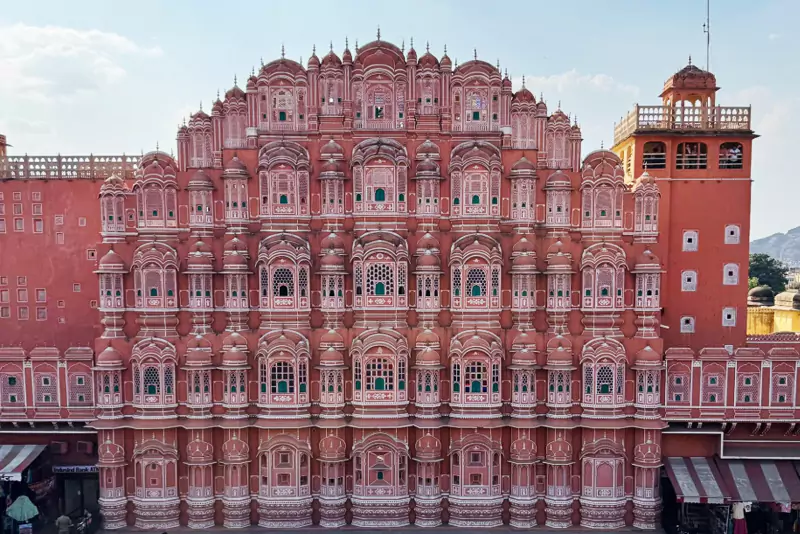
In the early morning, when the first rays of sunlight hit the walls of the palace, its colors and beauty become even more radiant—making it the perfect time for photography. A wide shot from the street in front beautifully captures the full grandeur of Hawa Mahal.
If you’re an Instagram or travel photography enthusiast, the view from the cafés or terraces located directly across from the palace offers a perfect angle to frame this iconic landmark.
4. City Palace – A Royal Treasure for Photographers
Located in the heart of Jaipur, the City Palace is where history, architecture, and royal grandeur come alive. Renowned not only for its magnificence and historical significance, this palace is also a paradise for photographers. Every corner, every doorway, and every vibrant courtyard tells a story—each photograph capturing a unique mood and moment.
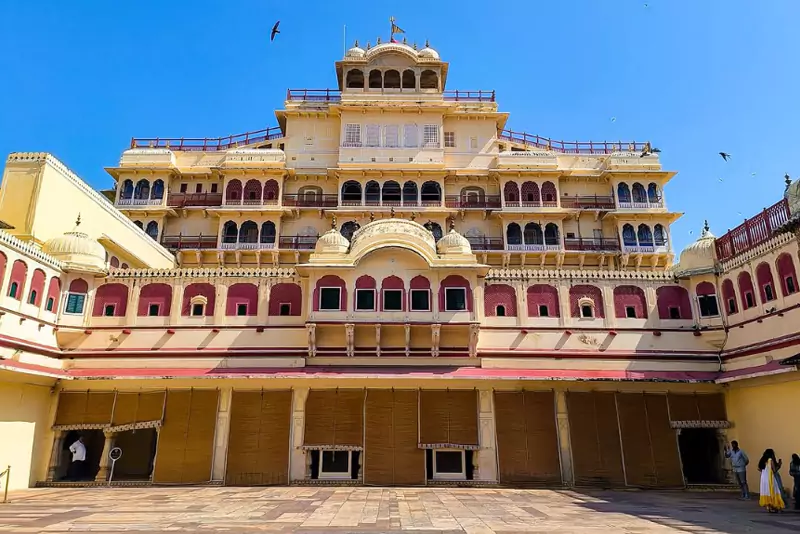
The intricate carvings and marble work of Mubarak Mahal make it ideal for stunning close-up shots. Its design is a unique blend of Mughal and Rajput architecture, which looks especially captivating on camera. Meanwhile, the vibrant decor, elegant balconies, and bold colors of Chandra Mahal reflect its royal charm—perfect for portrait and detail shots.
The grand halls of Diwan-e-Khas and Diwan-e-Aam, with their lofty pillars, vivid paintings, and magnificent chandeliers, offer an excellent setting for interior photography. The palace’s corridors and iconic doorways—especially the Pitra Gate, Lotus Gate, Rose Gate, and Green Gate—are inspired by different seasons and deities, providing Instagram-worthy backdrops at every turn.
5. Amber Fort – A Regal Heritage for Photography
Located about 11 kilometers from Jaipur, Amber Fort is a vibrant symbol of Rajasthani architecture and royal history. Perched on the Aravalli hills, every part of this majestic fort—from its grand gateways to intricately carved corridors—offers a perfect frame for photography.
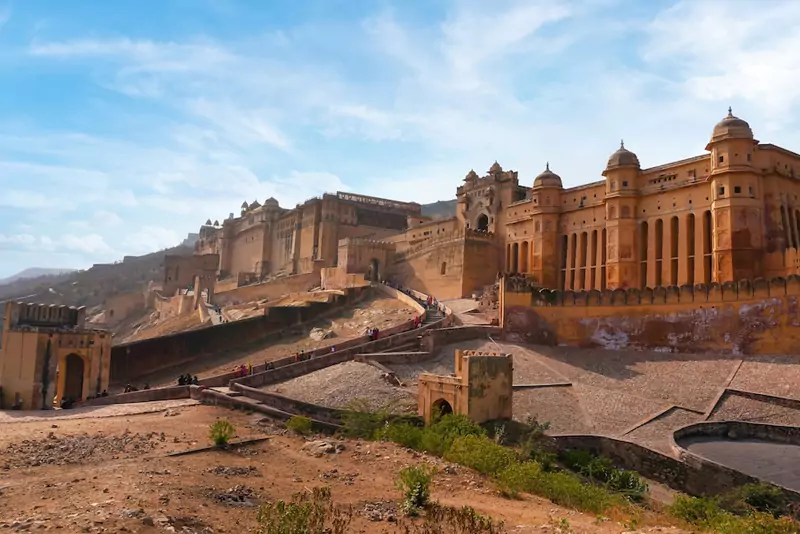
Massive gateways like Suraj Pol and Ganesh Pol are perfect for capturing stunning architectural shots. The intricate mirror work of Sheesh Mahal sparkles even with the slightest glimmer of light, adding a magical touch to your photos.
Spaces like Diwan-e-Aam, Sukh Niwas, and Jal Mandir, with their elegant pillars and open terraces, are ideal for classic portraits and wedding photography.
At night, when Amber Fort is beautifully illuminated, it becomes a sight worth capturing. Especially during the Light and Sound Show, the photos and videos taken here tell a story of their own.
Tip: The soft morning light or the golden hour at sunset both enhance the charm of Amber Fort, making it an even more captivating subject for photography.
6. Panna Meena ka Kund – Jaipur’s Unique Geometric Stepwell
Located near Jaipur, Panna Meena ka Kund is an ancient stepwell renowned for its symmetrical and stunning geometric design. Comprising multiple staircases, platforms, and corridors, this architectural marvel captivates both visitors and photographers alike.
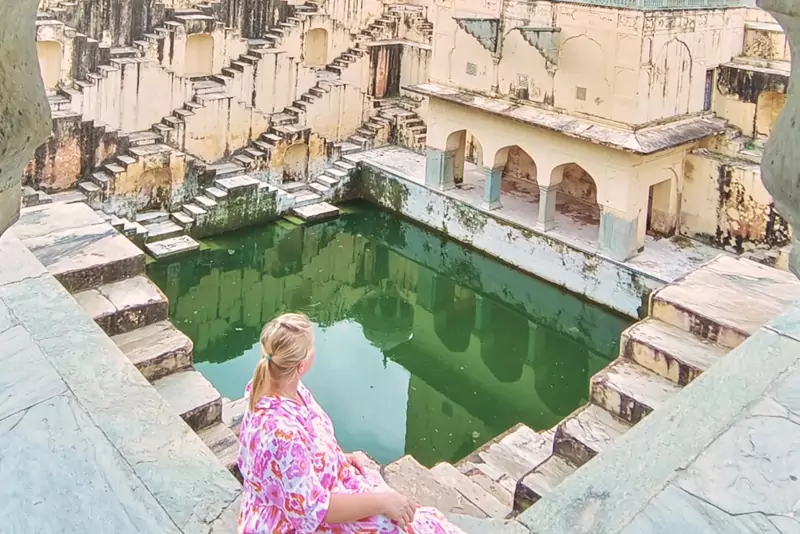
The interplay of light and shadow at Panna Meena ka Kund is truly mesmerizing, especially when sunlight filters through the steps. These shadows and patterns create a perfect backdrop for photography, adding a mysterious and artistic touch to every frame.
Panna Meena ka Kund is not just an architectural wonder but also a peaceful and aesthetically pleasing location, where photographers can capture stunning shots without the distraction of crowds. Its unique structure and earthy tones bring every click to life through your lens.
7. Gaitore Ki Chhatriyan – The Royal Cenotaphs of Jaipur
Nestled in the Aravalli hills near Jaipur, Gaitore Ki Chhatriyan is a royal cremation site, known for its beautifully carved marble cenotaphs and elegant domes. This serene and spiritual location offers a unique and tranquil experience for photographers, with its intricate architecture and peaceful ambiance.
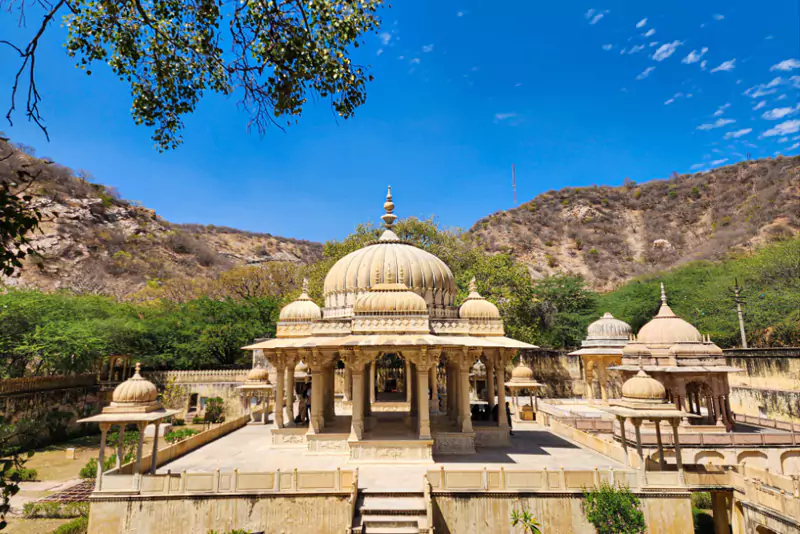
The white marble cenotaphs and their intricate carvings showcase the richness of Rajasthani craftsmanship, while the surrounding hills enhance the natural beauty of the site. The serene atmosphere and historical significance add depth and emotion to every photograph.
Gaitore Ki Chhatriyan is a remarkable blend of history, art, and nature in Jaipur—making it a must-visit destination for every photographer.
8. Monkey Temple – Galta Ji: A Colorful and Lively Experience in the Aravalli Hills
Nestled in the Aravalli Hills, the Galta Ji Temple—popularly known as the Monkey Temple—is one of Jaipur’s most unique and vibrant spiritual sites. Renowned not only for its religious significance, the temple is also known for the playful and lively monkeys that inhabit the area, adding a distinct charm to the experience.
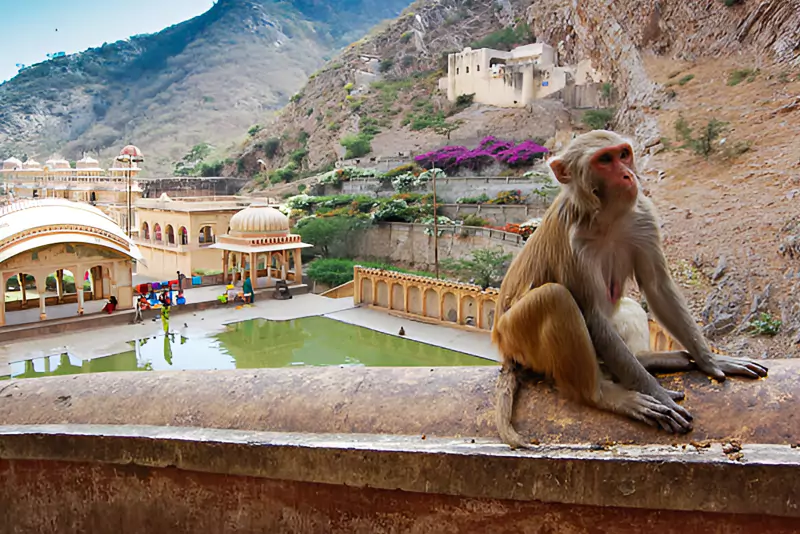
The vibrant frescoes within the Galta Ji Temple complex beautifully depict stories from Rajasthan’s rich cultural heritage. The natural water tanks and stone ghats become especially enchanting at sunset, offering photographers a dreamlike backdrop.
The playful energy of the monkeys combined with the peaceful aura of the temple creates a lively and unique scene for your camera. The temple’s architecture, natural surroundings, and lush greenery further enhance the visual appeal of any photoshoot.
Galta Ji Temple is not only a site of deep religious importance but also a visually stunning and dynamic location for photography—where nature, culture, and vitality come together in perfect harmony.
9. Jal Mahal – A Floating Royal Palace, a Dreamlike Spot for Photography
Located near Jaipur, Jal Mahal is a stunning and unique palace set in the middle of a lake, making it a captivating subject for photographers. Nestled at the base of the Aravalli hills, this palace sits at the heart of Man Sagar Lake, where its majestic structure and reflection in the water create a truly mesmerizing view.
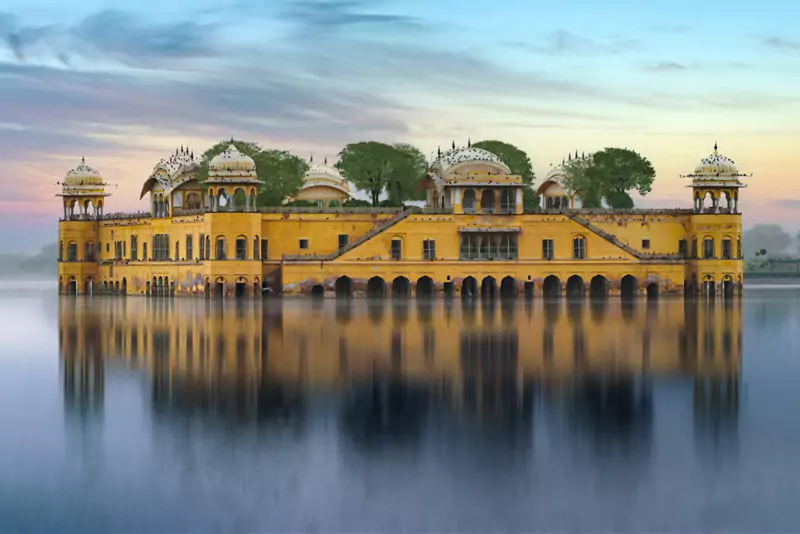
The architecture of Jal Mahal, seemingly floating in the middle of the water, appears even more enchanting in the soft light of morning and evening. Reflection shots captured here—featuring the palace mirrored in the lake alongside the surrounding hills—add a magical touch to your photographs.
The best time for photography is at sunrise or sunset, when the colors of the sky enhance the beauty of Jal Mahal dramatically. Using a wide-angle lens allows you to capture not just the palace, but also the lake and the surrounding natural scenery in one breathtaking frame.
Jal Mahal is one of Jaipur’s most photogenic spots—a perfect blend of history, nature, and art that offers endless inspiration for photographers.
10. Nahargarh Fort – Jaipur’s Golden View at Sunset
Perched on the Aravalli hills, Nahargarh Fort offers photographers a perfect location—especially at sunset. From here, you can capture a panoramic view of the entire city of Jaipur in a single frame, where the colorful buildings and rolling hills come together to create a breathtaking scene through the lens.
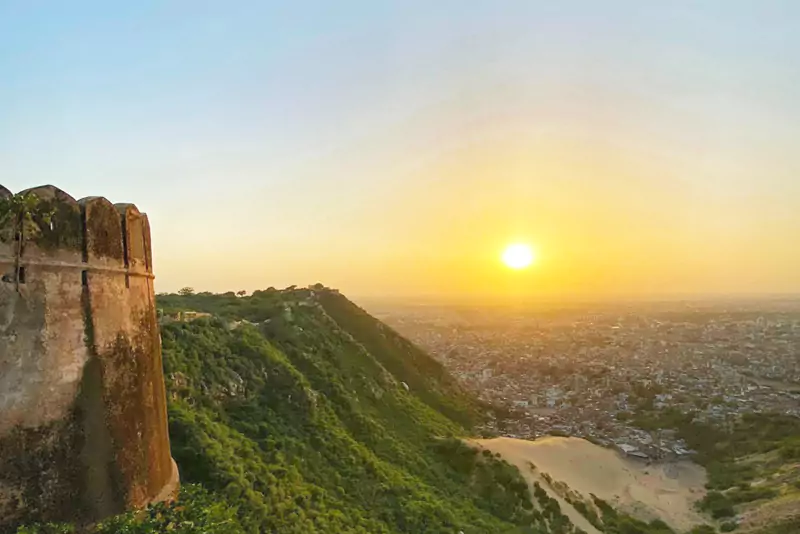
Inside the fort, the royal frescoes and artistically decorated corridors of Madhavendra Bhawan make for captivating photography subjects. The intricate architecture and detailed carvings bring Jaipur’s regal history to life through the lens.
At sunset, as the sky is painted in golden, pink, and orange hues, photos taken from Nahargarh Fort become truly enchanting and impactful. With a tripod and long exposure, you can capture stunning, high-quality shots.
Nahargarh Fort is an ideal destination to witness and photograph the beauty of Jaipur and its royal legacy all in one breathtaking location.
Photography Tips – For Capturing Jaipur’s Iconic Spots
- 1. Make the Most of Golden and Blue Hour:
The soft, warm light during sunrise and sunset adds a magical glow to your photos. Similarly, the cool tones of early morning and late evening can create stunning, serene compositions. - 2. Use a Tripod:
Especially during low light conditions in the evening or at night, a tripod is essential for long exposures and to keep your shots sharp and stable. - 3. Opt for a Wide-Angle Lens:
To capture the grandeur of Jaipur’s palaces, forts, and stepwells, a wide-angle lens is incredibly useful for showcasing full structures and dramatic landscapes. - 4. Focus on Details:
Zoom in on intricate Rajasthani carvings, frescoes, and mirror work. These close-up shots add artistic value and depth to your photo series. - 5. Capture Reflections:
Places like Jal Mahal offer beautiful reflection shots. Use the still water to double the visual impact of your images. - 6. Include People and Life:
Adding local life—like monkeys, artists, or tourists—can infuse your photos with energy and tell a more compelling story. - 7. Experiment with Perspective:
Try shooting from different angles—low to high, high to low, or from the side—to make your photos stand out and feel unique. - 8. Consider Lighting and Weather:
Whether it’s cloudy or sunny, different weather conditions bring different moods. Adjust your camera settings accordingly to make the most of natural light. - 9. Be Patient:
Photography requires patience. Wait for the right light, the perfect moment, and the best angle to get that one great shot. - 10. Take Multiple Shots:
Capture several images from the same location. This gives you more options to choose the best one during post-processing.






